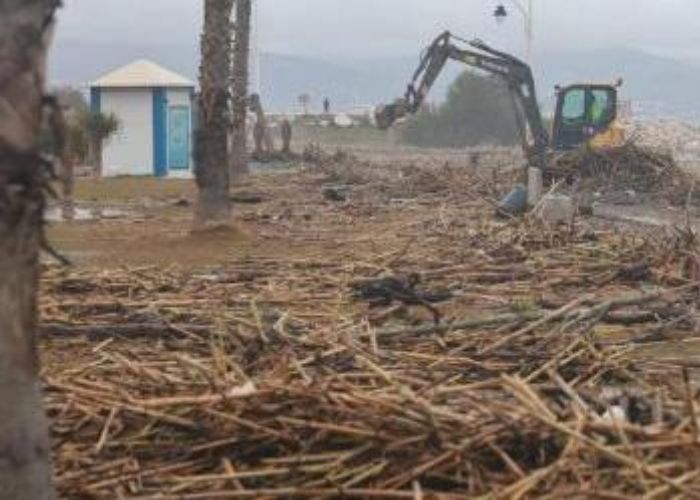The beaches of Malaga’s coast are suffering from serious erosion. That’s why the Spanish government has launched a historic beach restoration plan to restore them. The extensive project is the largest of its kind in decades.
It involves an investment of €2 million, which will be divided between the 169 kilometres of coastline of the province and 14 municipalities.
Causes of coastal erosion
The erosion is mainly due to the decreasing sediment supply from the rivers. It is stopped by dams and canals. Intensive construction also plays a role. The plan is being implemented by the local company Hermanos Pérez Garrán. First of all, sand is added from various sources, such as rivers, streams and quarries. Dunes will also be restored, old infrastructure will be demolished and the sand will be redistributed to compensate for different areas.
Malaga City and Axarquía
The contract for the eastern zone has a budget of €801,831, including taxes. Sand may be taken from the Benamargosa River, the Íberos River (Cajiz), the Guadalhorce Estuary, the Torrox River, the Chíllar or the Vélez Rivers. Among the beaches that could be restored are those of El Palo, Pedregalejo, Algarrobo, Candado, Malagueta, Playazo, Torrecilla, Rincón, Elimar, Valle-Niza, Benajarafe, Ferrara, Chucho, Guadalmar, Llanos, Ferrara, El Morche, Benagalbón, Los Rubios, Torre del Mar or Chilches.
From Torremolinos to Manilva
The contract between Torremolinos and Manilva amounts to €1.28 million, including taxes. Sand will be taken from the Fuengirola, Marbella, Guadalmina rivers. In Estepona this concerns the rivers Velerín, Castor, Padrón, Guadalmansa or the Albejeras stream. Other sources could be the Entrerrios area in Mijas or the port of Benalmadena.
Among the beaches that will be restored are El Bombo, Cala Mijas, Cabopino, Las Chapas, Santa Ana, Cable, Pinillo, Guadalmina, La Rada, San Pedro, Castillo, Sabinillas, Playamar, Bajondillo, Malapesquera or Manilva.
Activities
Furthermore, the work, with a completion period of six months, will be split up. Some promotions take place before the summer to avoid getting in the way of tourists. Others are performed just afterward. This way, the interventions therefore will have as little impact as possible on tourism, an important economic driver for the region.
Impact and strategy of beach restoration
The project is supported by European funding within the Recovery, Transformation and Resilience Plan. Thanks to careful preparation, it will be both environmentally friendly and effective. When awarding the contracts, the government took into account various aspects such as transport plans, accessibility of the beaches for heavy equipment and previous experiences with similar projects.
Also read: Two-thirds of Catalan beaches have shrunk since 1956


